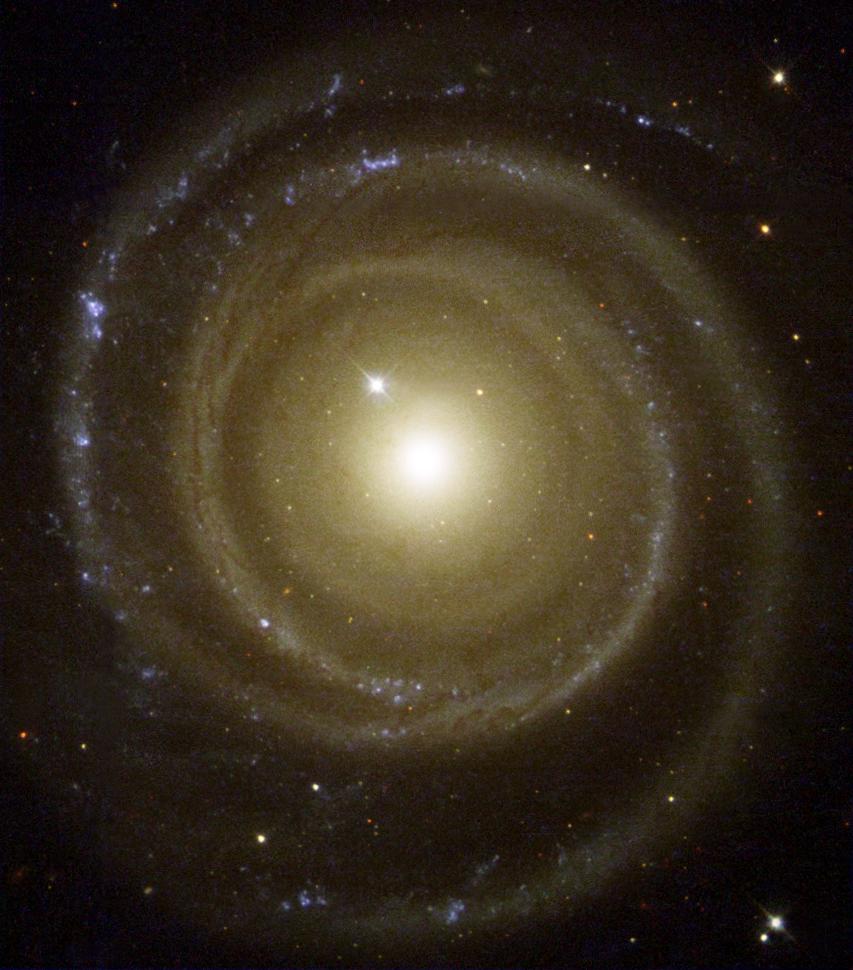Space is a clutter of stars, galaxies, planets and debris. All of these make up the beauty of our endless universe.
Galaxies
Galaxies are clusters of stars, planets and debris. They can be in three shapes, spiral galaxies, elliptical galaxies and irregular galaxies. All of these galaxies have a special shape and can be huge, thousands of light years long.
Link by JPL - NASA
Spiral galaxies are shaped like spirals. Our own galaxy, the Milky Way, is a spiral galaxy. Our solar system is located in the Orion Arm of the galaxy. The arm of a galaxy is one of the protrusions on the outside of the galaxy. Newer stars can be found in these galaxies, generally in the arms. About 77% of observed galaxies are spiral.
Link by Wikipedia
Elliptical galaxies are shaped like ellipses. They are generally round, but are sometimes stretched longer along one axis that the other. Older stars can be found in these galaxies.
Link by Flickr
Irregular galaxies are random and have no particular shape. This is generally because of the gravitational influence of other galaxies nearby. They lack distinct form and are irregularly shaped. These galaxies have dust and gas to form new stars and have many young stars.
Stars
Stars are made in dark molecular clouds. In the clouds, matter and dust collects together to collapse in gravity. Inside these collections, denser matter is formed into the core of the star. In the middle of the core, the matter is compressed and heats up, forming the light a heat that stars give off.
Stars
Stars are made in dark molecular clouds. In the clouds, matter and dust collects together to collapse in gravity. Inside these collections, denser matter is formed into the core of the star. In the middle of the core, the matter is compressed and heats up, forming the light a heat that stars give off.
Link by Flickr
Space is filled with hundreds of stars. They can be in any shape, size or point in their life cycle. Our own sun is also a star, and there are many others around this size. Seeing the sun in pictures next to the planets makes us surprised at how big it is, but there are many other stars that can be hundreds of times larger and make the sun look tiny next to them.
The video compares the size of the planets to the sun to some of the other stars in the universe. There are so many others that make the sun look puny, and while we think that it's huge, it really isn't compared to these supergiants.
Stars can be different colors, too. Our own sun is a yellowy orange. What temperature is this? We may say very hot. Red is hot and blue is cold. It says so on our bathroom water faucets and kettles and everything. In terms of stars, though, blue stars are actually the hottest. Red stars are the coolest. Not to say they aren't hot - they are - but they are considered the coldest stars. Red is the coldest, then orange, yellow, white and blue.
S&EP: Models
This week, I used models to examine the behavior of stars and planets. Scientists have tried for years to determine if there are other planets orbiting other stars, and whether or not they can support life. To do this, they can use two methods to determine if there are planets orbiting around stars like our planet and sun. Large planets are able to 'wobble' the star they orbit around. Sometimes the star will wobble a little bit, and sometimes it will wobble more. This is called the Doppler effect, and scientists use this to see if a star could be influenced by a planet. The second method is called the transit method, and to do this, scientists use telescopes to watch large stars like the sun. The light intensity of the stars will change if a planet passes in front of it. Scientists watch the stars rather than the planets because planets are dark against the dark sky, and it's easier to see the darkness against a star. These models helped me understand how stars and planets would really work in real life, and how scientists will both accurately and inaccurately study the stars and determine if there are other planets out there like earth.
XCC: Patterns
When studying the stars and trying to discover new things, scientists will look for patterns. Patterns like the transit method help them make new discoveries every day. This way, they can rely on more than one occurence of an event to see if they have accurate data. By watching to see if there is dimness in the stars, scientists can examine and record how many times this occurs and if it can be considered a pattern. If it is, it could be a planet orbiting that one star in particular. If it isn't, it could simply be an asteroid or other piece of debris floating around in space. Scientists look for these patterns because more than one occurence of these types of events can help explain and prove points they can try to make. Patterns are important in science because we can't rely on a single piece of evidence that only happened once; we need more background and a further understanding of the topic and data in order to be successful.




No comments:
Post a Comment